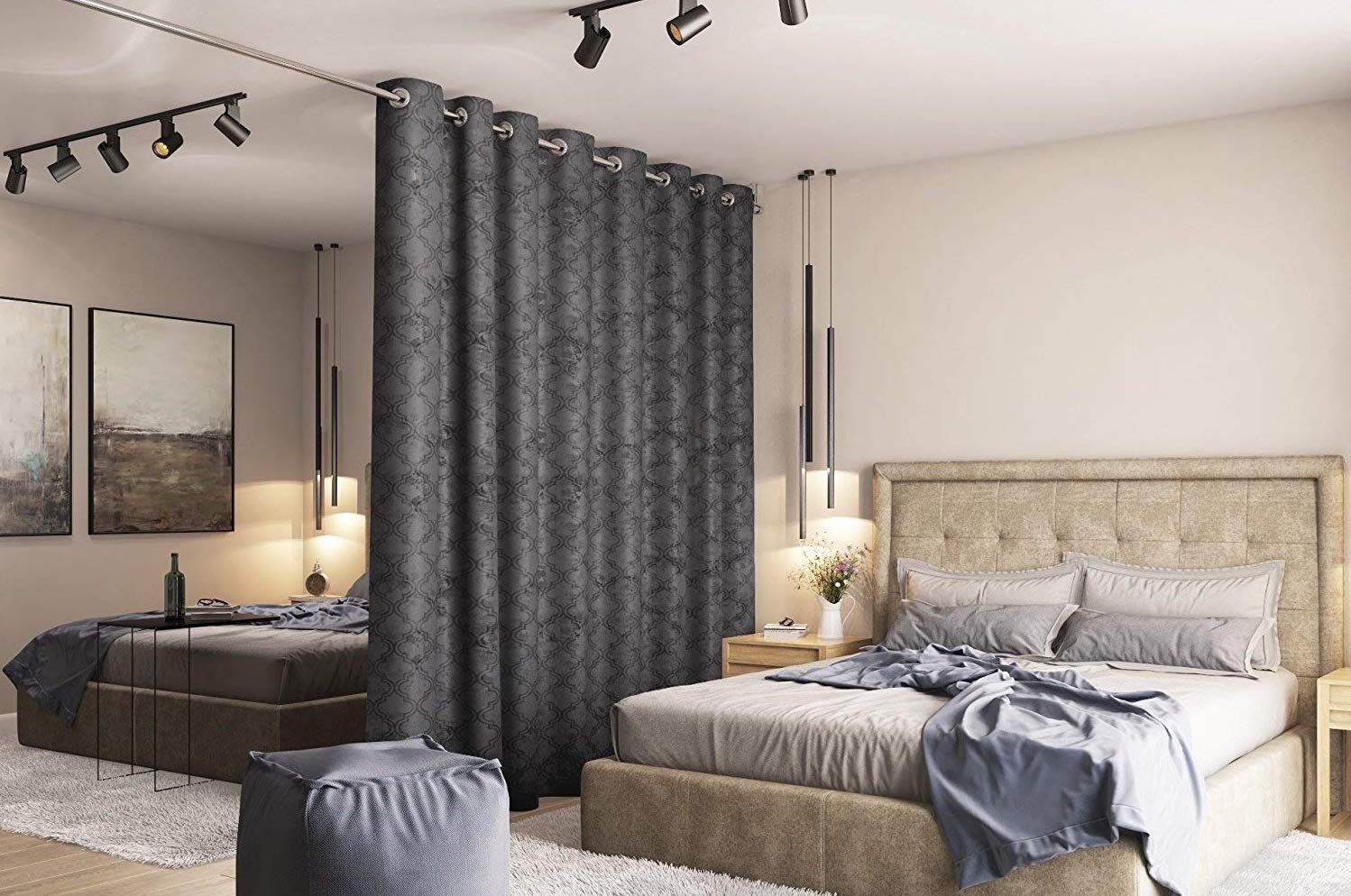The Versatility of Curtains for Bedroom Separation

Curtains offer a versatile and stylish solution for dividing a bedroom into distinct zones, enhancing functionality and creating a more organized and personalized space. They provide a flexible alternative to traditional walls or room dividers, allowing for easy adjustment and customization to suit your needs.
Types of Curtains for Bedroom Separation
Curtains come in a wide variety of styles, each with unique benefits and drawbacks that make them suitable for different separation purposes.
- Sheer Curtains: These lightweight curtains allow natural light to filter through, creating a soft and airy ambiance. They offer minimal privacy and sound insulation, making them ideal for separating spaces within a bedroom while maintaining a sense of openness.
- Room Darkening Curtains: These curtains are designed to block out light, providing complete privacy and darkness. They are ideal for creating a dedicated sleeping area or for blocking out distracting sunlight from a workspace.
- Thermal Curtains: These curtains are insulated to help regulate temperature and reduce noise. They are particularly effective for separating a bedroom from a noisy area or for creating a cozy and comfortable sleeping space.
- Heavy-Duty Curtains: These curtains are made from thick fabrics and are designed for maximum privacy and sound insulation. They are ideal for separating a bedroom from a noisy hallway or for creating a quiet and private space for relaxation.
The Impact of Curtain Materials on Light, Sound, and Privacy
The material of your curtains plays a significant role in how much light, sound, and privacy they provide.
- Light: Sheer curtains allow the most light to pass through, while room-darkening curtains block out almost all light. Thermal curtains offer a balance, filtering some light while still providing privacy.
- Sound: Heavy-duty curtains are the most effective at blocking out noise, while sheer curtains offer minimal sound insulation. Thermal curtains provide a moderate level of sound reduction.
- Privacy: Room-darkening curtains offer the highest level of privacy, while sheer curtains provide the least. Thermal curtains offer a moderate level of privacy.
Examples of Bedroom Zone Creation with Curtains
Curtains can be used to create distinct zones within a bedroom, allowing you to maximize space and functionality.
- Sleeping Area: Use room-darkening curtains to create a dedicated sleeping area that is separate from the rest of the bedroom. This can help to promote better sleep and create a more relaxing atmosphere.
- Workspace: Use thermal curtains to create a quiet and focused workspace within your bedroom. This can help to minimize distractions and improve productivity.
- Dressing Area: Use sheer curtains to create a semi-private dressing area within your bedroom. This can provide a sense of privacy while still allowing natural light to filter through.
Design Considerations for Curtain-Separated Bedrooms

Curtains can be much more than just functional room dividers. They offer a unique opportunity to enhance the overall aesthetic of your bedroom, adding a touch of personality and style. With a little creativity, you can transform your curtains into a design element that seamlessly blends with your existing décor and architectural features.
Color and Pattern Selection
The color and pattern of your curtains play a crucial role in setting the mood and ambiance of your bedroom.
- Neutral Colors: Opt for neutral colors like white, beige, or gray if you prefer a minimalist and timeless look. These colors create a sense of calm and serenity, allowing other elements in the room to take center stage.
- Bold Colors: For a more vibrant and energetic atmosphere, consider bold colors like red, blue, or green. These colors can add a pop of personality and create a focal point in the room.
- Patterns: Patterns can add visual interest and depth to your curtains. Geometric patterns create a modern and contemporary feel, while floral patterns bring a touch of nature and romanticism.
Functional Advantages of Curtain Separation: Bedroom Separated By Curtains

Curtains offer a versatile and practical solution for creating separate spaces within a bedroom, providing numerous functional advantages that enhance both privacy and flexibility. By strategically using curtains, you can transform a single room into distinct zones, each serving a unique purpose.
Privacy and Personal Space
Curtains effectively create a sense of privacy and personal space within a bedroom, allowing individuals to retreat to their own designated area for relaxation, work, or simply to enjoy some solitude. This is particularly beneficial for shared bedrooms, where siblings, roommates, or partners may need their own space to unwind or focus on different activities. The ability to close off a section of the room provides a sense of seclusion and control over one’s environment, promoting a feeling of well-being and reducing distractions.
Flexibility in Room Layout and Usage, Bedroom separated by curtains
Curtains offer unparalleled flexibility in room layout and usage, allowing you to adapt your bedroom to your changing needs. Unlike fixed walls or room dividers, curtains can be easily moved, adjusted, or removed, providing a dynamic and adaptable space. This flexibility is especially valuable for smaller bedrooms or those with limited space, as curtains can be used to create separate zones without permanently dividing the room.
Comparison with Other Separation Methods
Curtains offer a number of advantages over other separation methods, such as walls or room dividers. Unlike walls, curtains are less intrusive and do not permanently alter the room’s layout. They also provide a more flexible and adaptable solution, allowing you to easily adjust the amount of privacy and separation as needed. Compared to room dividers, curtains are often more affordable and can be easily integrated into a bedroom’s existing décor.
